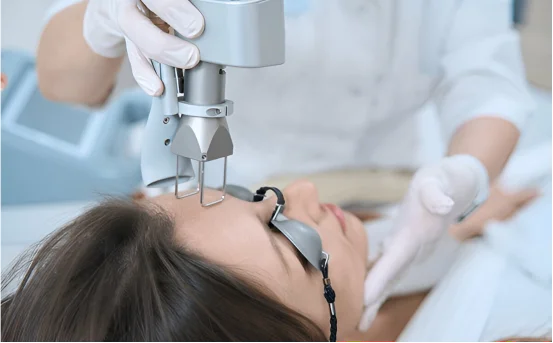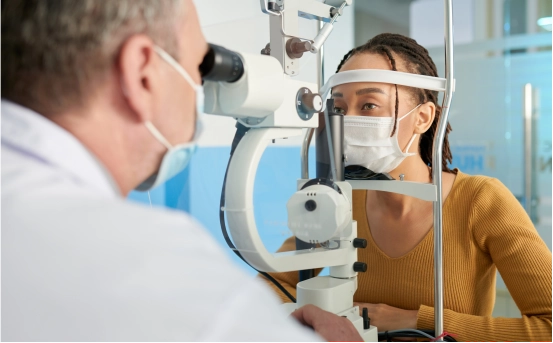Most of us have had a pimple or two, but for some people breakouts keep showing up well into their twenties and thirties. Even after the spots are gone, the red marks and scars can linger and become a whole new problem. If lotions and pills haven’t done the trick, you might want to look into what is laser acne removal, a pretty cutting-edge way to clear both active acne and leftover scars.
The treatment works by firing tiny, focused beams of light at the skin. Those beams help zap the bacteria that make breakouts happen, dial down oil production, and kick-start the body’s natural healing process. Because the laser targets only small sections of skin, it leaves surrounding tissue unharmed, which is part of why recovery is so quick. The procedure is safe, FDA approved, and done by doctors or trained skincare specialists—so you’re in good hands.
Laser therapy is especially useful for people who:
- Have stubborn acne that refuses to budge even after trying prescription creams and pills.
- Want to lighten dark spots and pits that formed after past breakouts.
- Crave a smoother, clearer, and more evenly toned complexion.
With its precision, short downtime, and lasting results, laser treatment has quickly become a go-to option for anyone serious about finally saying goodbye to acne for good.
Why Do Dermatologists Suggest Laser Acne Removal?
What Is Laser Acne Removal and How Does It Work?
Dermatologists often steer people toward laser acne removal instead of old-school lotions and pills for a few big reasons.
First, lasers go straight to the root of the problem. Creams, no matter how fancy, usually just sit on the skin’s surface. Lasers, on the other hand, dive deeper to blast the bacteria that cause breakouts, cut down oil production, and calm the skin’s overactive glands.
Second, lasers are a game-changer for scars left behind after acne has cleared. Treatments made for ice-pick scars, boxcar dents, or stubborn dark spots help the body pump out collagen, slowly filling in those dips and evening out the skin’s color.
Third, lasers can give relief to people who can’t handle pills. Some react badly to long courses of antibiotics or stronger drugs like isotretinoin (Accutane), so a no-med, drug-free option is welcome news.
Finally, laser sessions don’t just fight zits; they give the whole face a lift. The treatment tightens pores, sweeps away dead cells, and revs up fresh cell growth, leaving skin looking smooth, even-toned, and a little more youthful.
How Does the Treatment Actually Work?
The process itself isn’t one-size-fits-all. Doctors pick from several laser types based on each patient’s needs.
Ablative lasers are among the most popular. They lightly peel away the outer layer of skin while coaxing new, healthier skin to grow underneath. The CO2 laser and the Erbium laser are two that folks hear about often.
Non-Ablative Lasers Unlike older lasers that outright remove skin, non-ablative models work beneath the surface, leaving the top layer intact. By focusing on sebaceous glands and deeper tissue, the treatment nudges the body to build fresh collagen without the need for visible wounds. A common name you might hear is the Nd:YAG laser.
Fractional Lasers
Fractional devices fire thousands of tiny beams into the skin. Because each beam damages only a narrow column, the surrounding skin acts like a cushion, speeding up healing. That makes these lasers great for tackling scars, enlarged pores, and general uneven texture. Fraxel is one of the most well-known fractional brands on the market.
Blue Light and Red Light Therapy
These therapies aren’t full-blown lasers but small, handy light treatments you’ll find in clinics and even some home devices. Blue light zeroes in on the acne-causing bacteria, while red light helps soothe the skin and calm inflammation after a breakout. Together they make a solid one-two punch for mild to moderate acne.
Why People Like Laser Acne Removal
Laser acne treatment has become super popular, and it’s easy to see why. Here are some of the perks that draw people in:
- It’s non-invasive and pretty much pain-free, so you don’t have to worry about surgery.
- The laser zaps acne bacteria and even slows down oil production, giving your skin a fighting chance.
- It can fade existing scars and even out weird discoloration left behind by past breakouts.
- The overall tone and feel of your skin usually look brighter and smoother after a few sessions.
- Each appointment is quick, usually lasting 15 to 45 minutes—kind of the length of a school lunch!
- Compared to full-on surgery, the downtime is tiny, and most people are back to normal the next day.
- Doctors can tweak the settings to match your skin type and the seriousness of your acne.
Who Should Think about Getting It?
Laser treatment works for a lot of people, but it fits some folks a little better:
- Those dealing with moderate to severe acne that just won’t quit.
- Anyone who is tired of the scars that follow their breakouts.
- People who have tried creams and pills with no lasting results.
- Patients who know that perfection isn’t promised and are okay with smaller, realistic gains.
That said, if your skin is super sensitive, you have an active infection, or you have very dark skin, make sure to talk to a dermatologist first. Certain lasers can raise the risk of unwanted color changes, so it’s best to get professional advice.
Possible Side Effects and Risks
Like any cosmetic treatment, laser acne removal can have a few temporary hiccups afterward. You might notice a little redness or swelling where the beam hit, mild peeling or flaking as the skin repairs itself, and sometimes light or dark spots that pop up for a bit. The area may feel sensitive or irritating for a day or two, and in super rare cases a blister or infection could show up. The good news is that these side effects usually clear up in just a few days. Stick to the after-care plan your tech gives you, and use sunscreen every time you head outside to keep everything on track.
What to Expect During and After the Procedure
- Before Treatment: You’ll sit down for a quick chat where the technician looks at your skin type and how bad the acne is before deciding on a plan. They might tell you to pause certain products—like retinoids, harsh exfoliants, or strong acids—for a few days so your skin isn’t too irritated when the laser zaps in.
- During Treatment: Expect a cooling gel or a numbing cream to be slathered on first, then the laser wand moves across your face in short sweeps. Plenty of patients say it feels like a rubber band snapping, warm but totally bearable.
- After Treatment: Most people walk out with a blush that looks like light sunburn. Stay out of direct sunlight, stick to mild soap and moisturizer, and skip heavy makeup for a day or two. You can usually jump back into your regular routine the next day. For best results, be ready to schedule three to six sessions spaced a few weeks apart.
Conclusion
Laser acne removal is a fresh option that gives promise to anyone who has battled breakouts or their leftover marks. If you’ve experimented with every cream, gel, or scrub and are still frustrated, this kind of therapy can help you end up with skin that looks clearer, smoother, and a little brighter.
Thanks to new tech in dermatology, laser sessions are safer, work faster, and are easier to find than ever before. Still, talking things over with a board-certified dermatologist or skin expert is a must so you pick the exact laser treatment that fits your skin type and goals.























